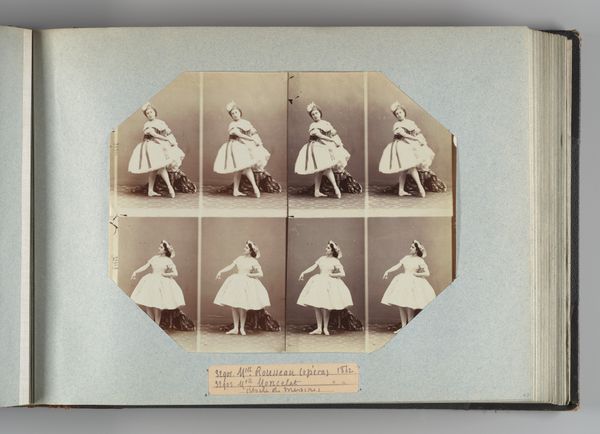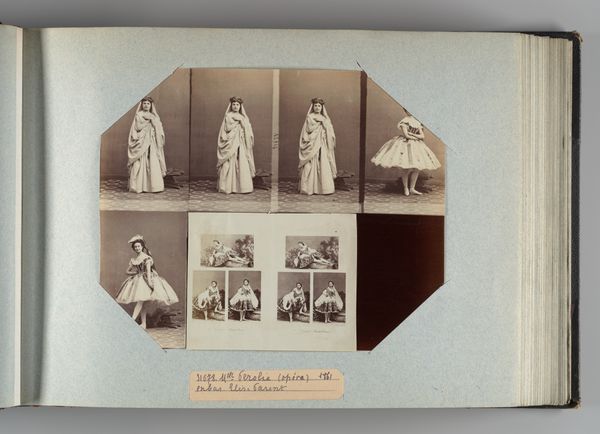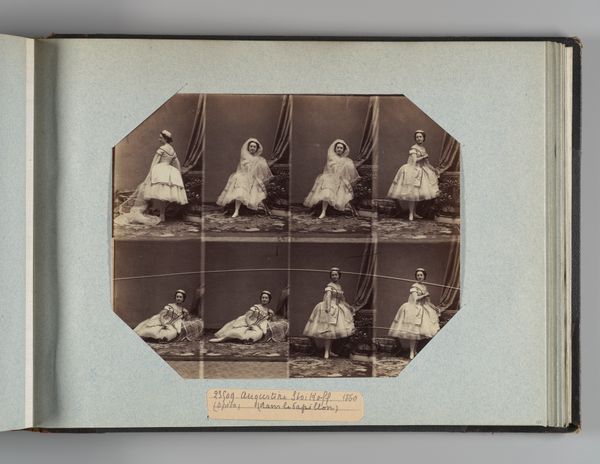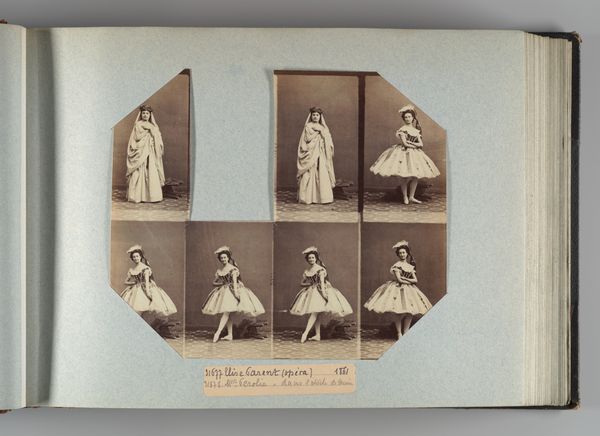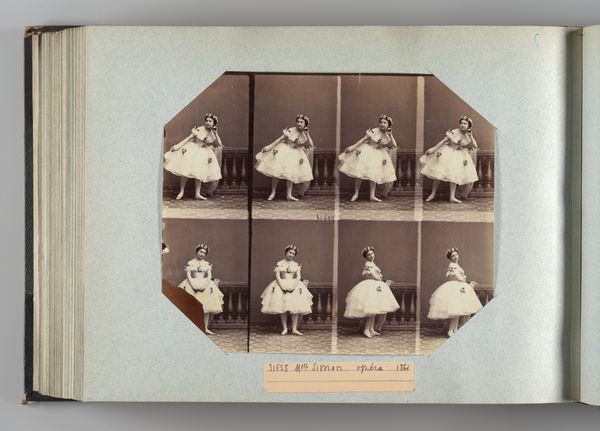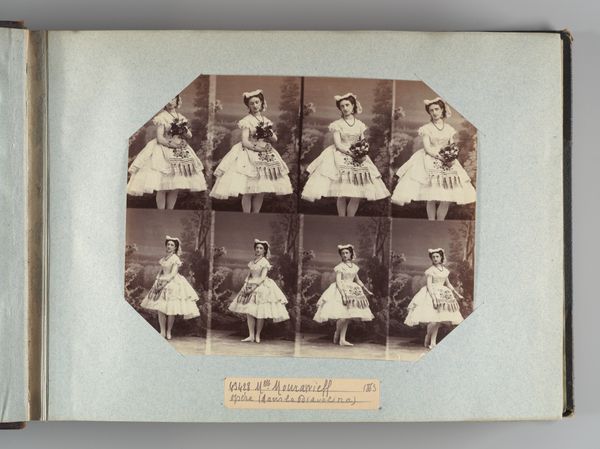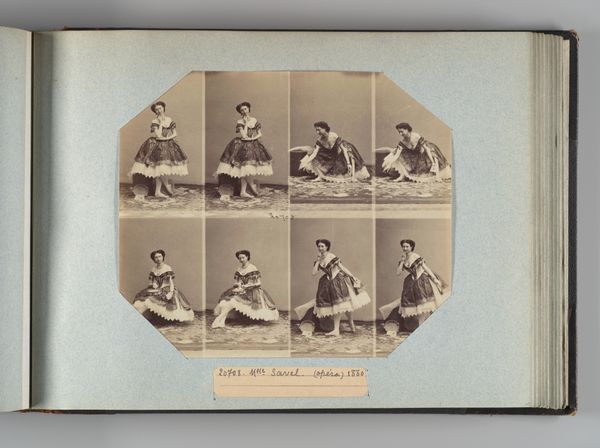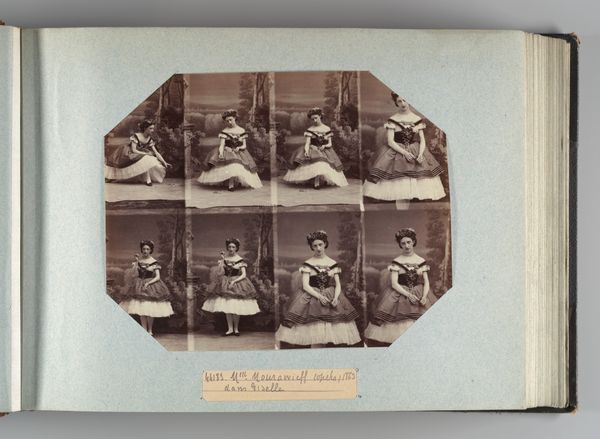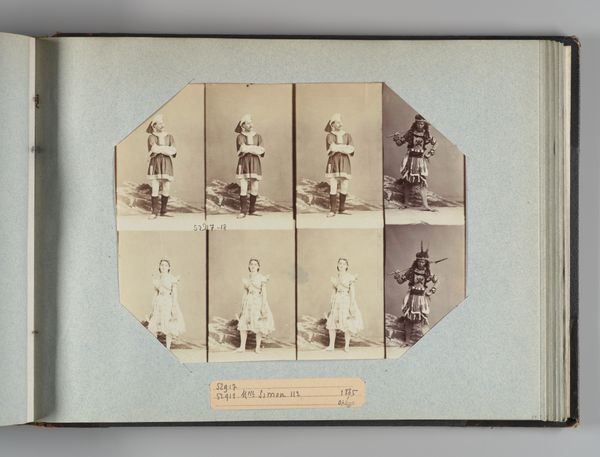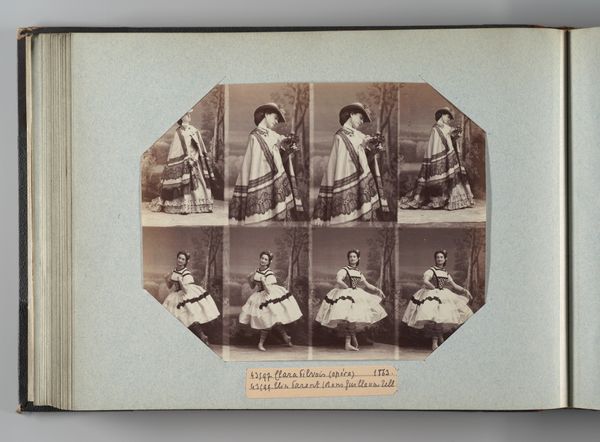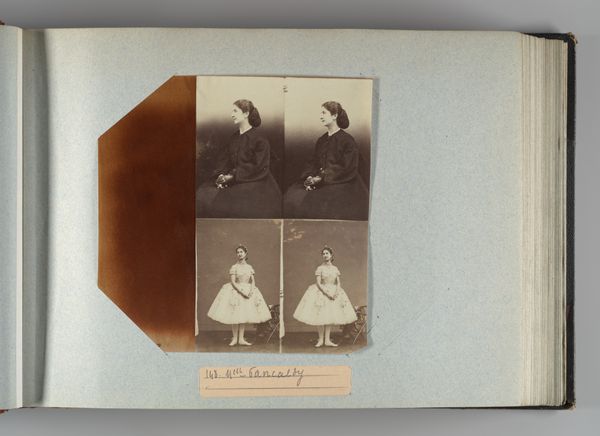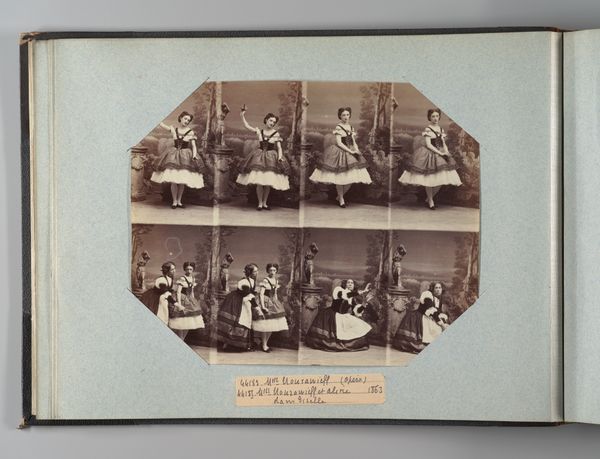
photography
#
portrait
#
photography
Dimensions: Image: 7 3/8 × 9 1/4 in. (18.8 × 23.5 cm) Album page: 10 3/8 × 13 3/4 in. (26.3 × 35 cm)
Copyright: Public Domain
Editor: So, this is "Mlle Rouquet," a photograph by André-Adolphe-Eugène Disdéri, dating from the 1850s or 60s, currently held at the Met. The composition, with these four identical images, almost feels like an early attempt at animation or a study in movement. What strikes you about this piece? Curator: The seriality is certainly compelling. Notice how the backdrop remains relatively consistent across all four frames, emphasizing the subtle shifts in the dancer's pose. Consider the implications of this repetition. Is it purely aesthetic, or does it reflect a nascent understanding of photographic sequencing as a means of capturing duration? Editor: That’s interesting. I was mainly focusing on the ballerina and how the composition created repetition. Is it just a multiple portrait, then, or is there something else that makes it more than that? Curator: Note how Disdéri’s process elevates the individual into a set of gestures and orientations; we might even say an objective type. Look at the even lighting. Its uniform application eliminates harsh shadows, prioritizing clarity and minimizing any psychological reading into her face. It shifts us away from the conventions of painted portraiture and establishes the photograph as a distinct medium. Does this objectivity undermine the subjectivity of the figure depicted? Editor: So it's less about capturing *her* personality and more about using her to explore what photography *can* capture. I suppose focusing on lighting and posture makes it about the art as much as the subject? Curator: Precisely. By minimizing subjective interpretation and highlighting objective observation, the photograph invites a unique visual encounter divorced from narrative expectations. Think of Roland Barthes' “punctum”—that unexpected detail that pierces the viewer. Here, the “punctum” isn’t an element *within* the photograph, but the entire photographic method *itself*. Editor: That really shifts my understanding! Instead of a simple portrait, it’s more about questioning how photography defines representation itself. Thank you. Curator: Indeed. Contemplate the transition of portraiture in the burgeoning age of mechanization and its visual products. Thank you for your observations as well.
Comments
No comments
Be the first to comment and join the conversation on the ultimate creative platform.
